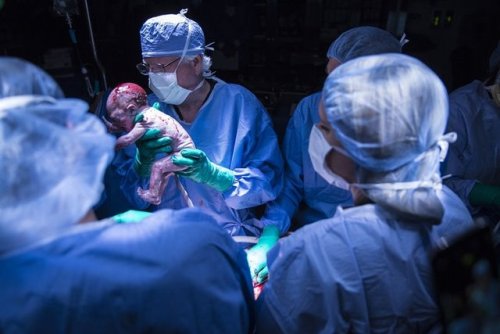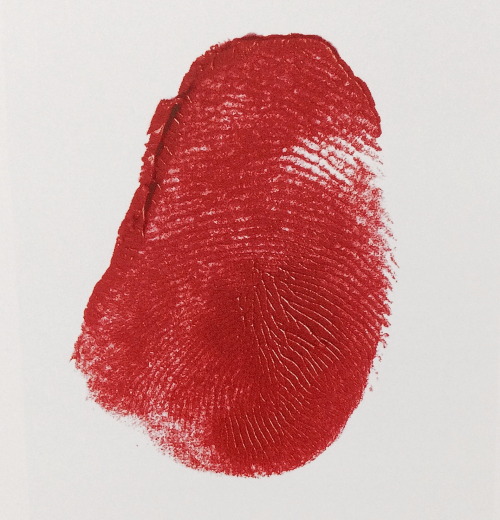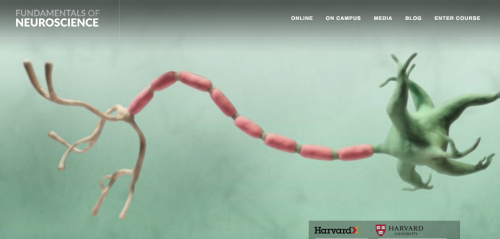Found On Reddit (the Thread Has Some More Good Ones)

Found on reddit (the thread has some more good ones)
More Posts from Theperpetualscholar and Others

Blood, Guts and Blow Flies
Forensic entomology is the study of insects/arthropods in criminal investigation. Insects are attracted to decomposing bodies and can lay their eggs inside of one. Studying the developing larval stages and insect population can help forensic scientists get a postmortem index (time of death). They are also able to tell if a body has been moved.
A timeline showing how insect activity relates to the stages of decomposition
Fresh stage (1-2 days after death): The first insects start arriving. Blow flies and flesh flies can be found arriving just minutes after death.
Bloated stage (2-7 days after): The abdomen of the decomposing body inflates and internal temperatures start to rise due to arthropod activity. The greatest number of diptera/flies are attracted at this stage.
Decay stage (5-13 days after): The body deflates and some of the diptera larvae leave the carcass to pupate.
Post-decay stage (10-23 days after): Most larvae leave and the body becomes a hotspot for arthropod activity.
Remains stage (18-90+ days after): The body dries up causing larval and adult diptera populations to decline.




This Facial Reconstruction of Henri IV King of France by French artist Philippe Froesch is Mindblowing!
This was all done digitally through a combination of programs like Cinema4d and Zbrush. Traditional methods are still used in his digital reconstructions as you can see in the bottom left picture. The dots poking out from the skull are facial tissue depth markers. They tell the reconstruction artist how thick the tissues should be at certain points on the skull based on large collections of data.

Unidentified Photographer, Thrombocyte (Blood Platelet), (1955)

Exclusive: First U.S. Baby Born After a Uterus Transplant
For the first time in the United States, a woman who was born without a uterus gave birth to a baby. The landmark birth took place at Baylor University Medical Center at Dallas, a part of Baylor Scott & White, TIME reports exclusively.
“We’ve been preparing for this moment for a very long time,” says Dr. Liza Johannesson, an ob-gyn and uterus transplant surgeon at Baylor. “I think everyone had tears in their eyes when the baby came out. I did for sure.” The woman and her husband asked that their identity not be revealed in order to protect their privacy


Harvard University offers a completely free online course on the Fundamentals of Neuroscience that you can get a certificate for successfully completing and which requires nothing other than basic knowledge in Biology and Chemistry. This excites me! Here’s the website

Hello everyone.
Apologies for the long/unexplained absence. I’ve not been doing very well recently and I haven’t quite had the time to be posting. However, a small update is that I’m struggling very much with my mental health but my studies are going very well. I just wanted to thank you all for your kindness and support and I will try update more regularly from now on!
I hope you are all well and looking after yourself, and I’m sending love, hugs and good study vibes 💗
Your Gut in Space
Finding the Right Balance for the Microbiota
Trillions of microorganisms live on and in the human body, many of them essential to its function and health. These organisms, collectively known as the microbiota, outnumber cells in the body by at least five times.

Microorganisms in the intestinal tract, the gut microbiota, play an especially important role in human health. An investigation on the International Space Station, Rodent Research-7 (RR-7), studies how the gut microbiota changes in response to spaceflight, and how that change in turn affects the immune system, metabolic system, and circadian or daily rhythms.

Research shows that the microbiota in the mammalian digestive tract has a major impact on an individual’s physiology and behavior. In humans, disruption of microbial communities has been linked to multiple health problems affecting intestinal, immune, mental and metabolic systems.

The investigation compares two different genetic strains of mice and two different durations of spaceflight. Twenty mice, ten of each strain, launch to the space station, and another 20 remain on the ground in identical conditions (except, of course, for the absence of gravity). Mice are a model organism that often serves as a scientific stand-in for other mammals and humans.

Fecal material collected from the mice every two weeks will be examined for changes in the gut microbiota. Researchers plan to analyze fecal and tissue samples after 30 and 90 days of flight to compare the effects of different durations of time in space.

With a better understanding of relationships between changes such as disruption in sleep and an imbalance of microbial populations, researchers can identify specific factors that contribute to changes in the microbiota. Further studies then can determine proactive measures and countermeasures to protect astronaut health during long-term missions.

Make sure to follow us on Tumblr for your regular dose of space: http://nasa.tumblr.com.
-
 pudgyroo liked this · 2 years ago
pudgyroo liked this · 2 years ago -
 smallsleepyoarfish liked this · 2 years ago
smallsleepyoarfish liked this · 2 years ago -
 idontreallywanadotheworktoday liked this · 2 years ago
idontreallywanadotheworktoday liked this · 2 years ago -
 catgirl-catboy reblogged this · 2 years ago
catgirl-catboy reblogged this · 2 years ago -
 rubinkatze liked this · 4 years ago
rubinkatze liked this · 4 years ago -
 comicaltruestory liked this · 4 years ago
comicaltruestory liked this · 4 years ago -
 just-you-know-stuff reblogged this · 4 years ago
just-you-know-stuff reblogged this · 4 years ago -
 just-you-know-stuff liked this · 4 years ago
just-you-know-stuff liked this · 4 years ago -
 kingofcurses liked this · 4 years ago
kingofcurses liked this · 4 years ago -
 chemicalex liked this · 4 years ago
chemicalex liked this · 4 years ago -
 seths-heart reblogged this · 4 years ago
seths-heart reblogged this · 4 years ago -
 seths-heart reblogged this · 4 years ago
seths-heart reblogged this · 4 years ago -
 seths-heart liked this · 4 years ago
seths-heart liked this · 4 years ago -
 missyhyde liked this · 4 years ago
missyhyde liked this · 4 years ago -
 unexpectedsyzygy liked this · 4 years ago
unexpectedsyzygy liked this · 4 years ago -
 unforgettablelex liked this · 5 years ago
unforgettablelex liked this · 5 years ago -
 itsmesofiedear-blog liked this · 5 years ago
itsmesofiedear-blog liked this · 5 years ago -
 dyaus-pita liked this · 5 years ago
dyaus-pita liked this · 5 years ago -
 fyrism liked this · 5 years ago
fyrism liked this · 5 years ago -
 codingoverload reblogged this · 5 years ago
codingoverload reblogged this · 5 years ago -
 codingoverload liked this · 5 years ago
codingoverload liked this · 5 years ago -
 killersyko liked this · 6 years ago
killersyko liked this · 6 years ago -
 canna-change-the-laws-of-physics liked this · 6 years ago
canna-change-the-laws-of-physics liked this · 6 years ago -
 collegedykethatneedssleep liked this · 6 years ago
collegedykethatneedssleep liked this · 6 years ago -
 lemonlyman-dot-com liked this · 6 years ago
lemonlyman-dot-com liked this · 6 years ago -
 glassphoenix liked this · 6 years ago
glassphoenix liked this · 6 years ago -
 italiansocialistguy-blog liked this · 6 years ago
italiansocialistguy-blog liked this · 6 years ago -
 dank-double-decker-hecker-blog liked this · 6 years ago
dank-double-decker-hecker-blog liked this · 6 years ago -
 nichira liked this · 6 years ago
nichira liked this · 6 years ago -
 bxbyporcelain liked this · 6 years ago
bxbyporcelain liked this · 6 years ago -
 rossallycious reblogged this · 6 years ago
rossallycious reblogged this · 6 years ago -
 ti-basic reblogged this · 6 years ago
ti-basic reblogged this · 6 years ago -
 blackplagueproxy-blog liked this · 6 years ago
blackplagueproxy-blog liked this · 6 years ago -
 rossallycious reblogged this · 6 years ago
rossallycious reblogged this · 6 years ago -
 rossallycious liked this · 6 years ago
rossallycious liked this · 6 years ago -
 csboywonder liked this · 6 years ago
csboywonder liked this · 6 years ago -
 supporfeednobrand liked this · 7 years ago
supporfeednobrand liked this · 7 years ago -
 velocicracker reblogged this · 7 years ago
velocicracker reblogged this · 7 years ago -
 smkntr-blog liked this · 7 years ago
smkntr-blog liked this · 7 years ago -
 harrypercyfangirl-blog reblogged this · 7 years ago
harrypercyfangirl-blog reblogged this · 7 years ago -
 arlyn-nylra reblogged this · 7 years ago
arlyn-nylra reblogged this · 7 years ago -
 arlyn-nylra liked this · 7 years ago
arlyn-nylra liked this · 7 years ago -
 kalycev reblogged this · 7 years ago
kalycev reblogged this · 7 years ago -
 greedy-for-this liked this · 7 years ago
greedy-for-this liked this · 7 years ago
